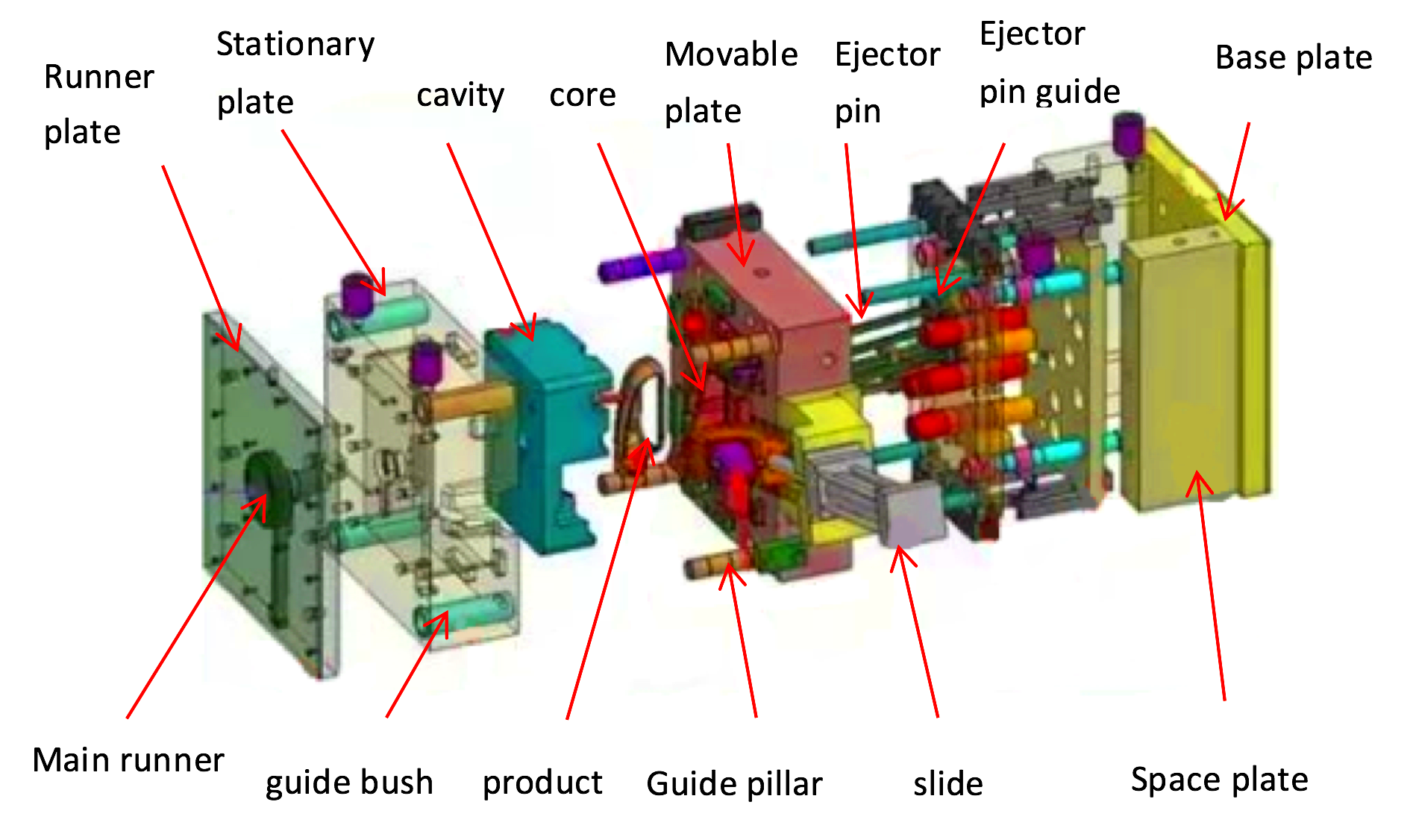Modernist photography emerged in the early 20th century as a response to traditional artistic approaches. It sought to break free from the rules of classical photography, focusing instead on innovation, abstraction, and experimentation. This style emphasized simplicity, sharp lines, and new ways of seeing the world. By rejecting ornate details and focusing on form and structure, modernist photographers aimed to present reality in its most basic yet visually striking form.
The modernist movement in photography wasn't just about taking pictures. It was about redefining how we view the world through the lens. Photographers became more interested in capturing shapes, shadows, and light, often distorting reality to explore new perspectives. Modernist photography paved the way for the dynamic photography techniques we see today.
Defining the Modernist Style in Photography

The modernist style in photography is characterized by several key elements that distinguish it from other artistic movements. It focuses on abstract representations, rejecting realism in favor of more experimental, non-representational forms. Here are a few hallmarks of modernist photography:
- Abstraction: Moving away from clear depictions of reality, modernist photographers sought to abstract the world through creative angles, lighting, and framing.
- Simplicity: The modernist style often uses minimalism—fewer elements in the frame—to allow the subject to stand out without distractions.
- Sharp Lines and Geometrical Forms: Geometric shapes and patterns, such as circles, triangles, and squares, are frequently featured.
- Experimental Techniques: Modernist photographers played with shadows, reflections, and unusual compositions to create striking and thought-provoking imagery.
Through these techniques, modernist photography transformed how we think about what a photograph can be. It moved beyond the traditional confines of portraiture and landscape, offering a fresh take on the art form.
Also Read This: How to Sign the iStock Exclusive Agreement: A Step-by-Step Tutorial
Key Elements of Modernist Images

Modernist images are easily recognizable due to their distinct features, which break away from traditional norms. Let's dive into the key elements that make an image truly modernist:
- Composition: The arrangement of visual elements is crucial. Modernist photographers often use asymmetrical compositions to create a sense of balance without traditional order.
- Light and Shadow Play: The contrast between light and dark areas in modernist photography plays a significant role in shaping the mood and focus of the image.
- Focus on Form: Rather than capturing a subject in its entirety, modernist photographers often emphasize the shapes, textures, and patterns within the subject, isolating them for artistic effect.
- Abstracted Realism: While the images are often abstract, they still maintain a connection to reality, although the interpretation is left to the viewer’s imagination.
Modernist photography isn’t about showing the world as it is, but about presenting it in new and interesting ways. It's not always easy to define what makes an image "modernist," but these elements provide a good foundation for understanding the style.
Also Read This: How to Clean Up Your LinkedIn Profile by Removing Old Resumes
The Role of Technology in Modernist Photography

Technology has played a significant role in shaping modernist photography. From the invention of the camera to the rise of digital editing tools, technological advancements have constantly pushed the boundaries of what’s possible in photography. Early modernist photographers embraced new technologies like the 35mm film camera, which offered them greater flexibility and the ability to experiment with compositions and angles. Today, digital cameras, editing software, and even smartphone cameras provide photographers with an even wider range of tools to create innovative and abstract images.
In particular, digital technology has opened up new possibilities for post-processing. Photographers can now manipulate images in ways that were once unimaginable. Here are some ways technology has influenced modernist photography:
- Image Manipulation: With advanced editing software, photographers can enhance or alter images by adjusting contrast, color balance, or even creating surreal compositions that wouldn't be possible with traditional film.
- High-Resolution Images: Modern digital cameras capture highly detailed images, allowing for more precise exploration of texture, shape, and light.
- Instant Feedback: Digital photography allows photographers to experiment quickly and review their shots immediately, enabling more spontaneous and creative choices.
- Access to a Wide Range of Tools: From virtual reality (VR) to augmented reality (AR), new technologies continue to change the landscape of modernist photography, offering fresh ways to explore form and composition.
Overall, technology has allowed modernist photographers to stretch their creative limits, turning traditional boundaries upside down and creating new ways of viewing the world through the lens.
Also Read This: How to Sell Stock Photos on Getty Images
Understanding the Concept of Minimalism in Modernist Photography
Minimalism is one of the most defining characteristics of modernist photography. This concept involves reducing the visual elements of an image to their most basic forms, focusing on simplicity and clarity. The goal is to strip away unnecessary distractions and emphasize the core subject or idea of the photograph. In the context of modernist photography, minimalism is not just about less—it’s about creating powerful, impactful images with the fewest possible elements.
In minimalist modernist photography, the photographer’s main challenge is to find beauty in simplicity. This often involves choosing subjects with clean lines and shapes, or shooting with large expanses of empty space to emphasize a single object. Here are some key principles of minimalism in modernist photography:
- Simplicity: The use of a single subject, few details, and often a monochromatic or muted color palette.
- Negative Space: A technique where large portions of the frame are left empty, which directs the viewer’s focus to the subject.
- Geometric Forms: The use of shapes such as circles, squares, and triangles to create a sense of order and harmony within the image.
- Monochrome or Limited Colors: Often, minimalist photos stick to black-and-white or use a limited color scheme to avoid unnecessary distractions.
Minimalism allows photographers to explore the relationship between space, light, and form, often making ordinary subjects appear extraordinary through their simple portrayal.
Also Read This: Understanding the iStock Signature Collection Quality and Value for Buyers
How Above Image Reflects Modernist Principles
When looking at the image above, it’s easy to see how it reflects core modernist principles. The clean lines, abstract elements, and emphasis on composition immediately signal that the image is inspired by modernist photography. Here’s a closer look at how the
- Abstraction: The image may focus on shapes and patterns rather than a clear, realistic subject, which is a hallmark of modernist photography.
- Simplified Composition: By eliminating clutter or distractions, the image likely presents only the essential elements, creating a more focused and thought-provoking visual.
- Use of Negative Space: If the image incorporates large areas of empty space, it allows the subject to stand out and enhances the feeling of simplicity and minimalism.
- Geometric and Textural Focus: Modernist photography often highlights the beauty of geometric forms or textures, which might be evident in the above image’s emphasis on lines or patterns.
Overall, this image exemplifies how modernist photographers use these techniques to transform everyday scenes into works of art that challenge viewers’ perceptions of reality. By focusing on form, composition, and abstraction, the image invites us to look deeper and see the world from a new perspective, which is the essence of modernist photography.
Also Read This: How to Obtain Ten More Free Stock Images from Adobe
Modernist Photography in the Digital Era
In the digital age, modernist photography has evolved, integrating new tools and techniques that were once unimaginable. With the rise of digital cameras and editing software, photographers can now experiment with light, form, and perspective in ways that go beyond traditional film photography. Digital technology has made it easier to explore new dimensions in modernist photography while keeping the principles of abstraction, simplicity, and minimalism intact.
One of the biggest changes digital photography has brought to modernism is the ability to manipulate images in post-processing. Photographers can now refine their work, enhancing elements like contrast, saturation, and sharpness, or even completely alter an image. Digital photography also allows for quicker experimentation, as photographers can instantly review their shots and make adjustments on the spot.
Here’s how digital tools have impacted modernist photography:
- Instant Feedback: Photographers can instantly see their shots, allowing them to try different compositions and lighting in real-time.
- Editing Flexibility: Software like Adobe Photoshop and Lightroom offers endless opportunities to fine-tune and experiment with images, making them more abstract or minimalist.
- High-Resolution Images: Modern digital cameras capture incredible detail, enabling photographers to focus on the small intricacies of a subject that might be missed in traditional photography.
- Access to New Tools: New technologies like 3D imaging, drones, and VR are expanding the possibilities for modernist photographers to create even more immersive or experimental images.
Digital photography has not only made modernist principles more accessible but has also opened up fresh avenues for creativity, keeping the spirit of innovation alive in the modernist movement.
Also Read This: Do People Make Money on Rumble Exploring Monetization Options for Content Creators
Where to Find Modernist Photography Online
For anyone interested in exploring modernist photography, the internet is a treasure trove of high-quality, thought-provoking images. Numerous platforms and websites host a variety of modernist works, offering inspiration and downloadable content for personal use or creative projects. Whether you're an art enthusiast, a student of photography, or a creative professional, there are plenty of resources to help you discover this unique art form online.
Here are some of the best places to find modernist photography:
- Stock Photography Websites: Websites like HDStockImages.com offer a wide selection of modernist-style photos that can be downloaded for both personal and commercial use.
- Art Platforms: Online galleries like Saatchi Art or Artsy showcase modernist works from photographers around the world.
- Photography Blogs and Portfolios: Many photographers maintain online portfolios where they share their latest modernist works, often with insight into their creative process.
- Social Media: Platforms like Instagram and Pinterest are filled with modernist photography, allowing users to connect directly with artists and find inspiration from a global community.
- Online Museums and Exhibitions: Digital exhibitions from major museums like the Museum of Modern Art (MoMA) often feature collections of modernist photography from renowned photographers.
These platforms allow both amateurs and professionals to access, view, and even download high-quality modernist photographs. Whether you’re looking for artistic inspiration or unique images for a project, these resources offer a diverse selection of modernist photography from around the world.
Also Read This: how submit photos to adobe stock
FAQ
What is modernist photography?
Modernist photography focuses on abstraction, minimalism, and experimentation, rejecting traditional depictions of reality. It emphasizes the use of form, line, and geometric shapes to create striking visual compositions.
How is modernist photography different from traditional photography?
Traditional photography often strives to represent the world realistically, while modernist photography breaks away from this by focusing on the artistic interpretation of subjects, often through abstraction, minimalism, and experimental techniques.
Can I use modernist images for commercial purposes?
Yes, many websites, like HDStockImages.com, offer modernist images that are available for commercial use. Always check the licensing terms for each image to ensure it fits your intended use.
Where can I learn more about modernist photography?
There are many online resources, such as photography blogs, digital galleries, and stock photo sites, where you can learn more about modernist photography. Additionally, books and documentaries about the modernist movement often provide in-depth insights into its development and influence on photography.
What tools are used to create modernist photographs today?
Modernist photographers today use digital cameras, editing software (like Adobe Photoshop and Lightroom), and new technologies such as drones, 3D imaging, and virtual reality tools to create innovative and abstract photographs.
Conclusion
Modernist photography continues to be a powerful force in the world of visual art. By embracing abstraction, minimalism, and experimentation, modernist photographers have redefined how we perceive the world through a camera lens. Whether captured through traditional film or enhanced by digital technology, the essence of modernism lies in its ability to challenge conventional notions of reality and invite viewers to see familiar subjects in new, thought-provoking ways. As technology advances and new tools emerge, modernist photography evolves, pushing the boundaries of creativity and offering fresh perspectives for future generations of photographers and art lovers.

 admin
admin








